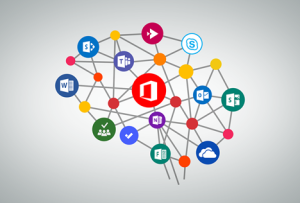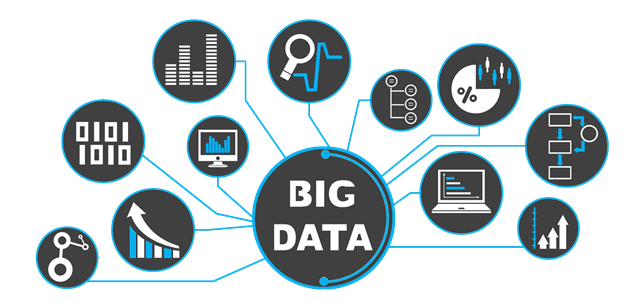Improving real-time monitoring with Big Data analytics:
In the face of a global pandemic, the ability to monitor and track the spread of the virus in real-time is crucial for effective response efforts. Big Data analytics play a key role in enhancing this monitoring process by aggregating and analyzing vast amounts of data from various sources. By leveraging advanced analytics tools, healthcare professionals can quickly identify trends, patterns, and anomalies that may indicate the emergence of new outbreaks or hotspots. This real-time monitoring allows for prompt action to be taken to contain the spread of the virus and protect public health.
Utilizing Big Data for enhanced surveillance capabilities:

Big Data has revolutionized the way surveillance is conducted during pandemics. By harnessing the power of Big Data, healthcare organizations can improve their surveillance capabilities by tracking the movement of the virus, monitoring population health trends, and identifying high-risk areas.
This enhanced surveillance allows for more targeted interventions and resource allocation, ultimately leading to more effective pandemic response strategies. With Big Data, healthcare professionals can stay one step ahead of the virus and make data-driven decisions to protect the health and safety of the population.
Enhancing accuracy of pandemic predictions using Big Data:
One of the key benefits of Big Data in pandemic response is its ability to improve the accuracy of forecasting and modeling. By analyzing large datasets, healthcare professionals can better predict the trajectory of the virus, anticipate potential outbreaks, and identify vulnerable populations.
This enhanced accuracy enables healthcare organizations to allocate resources more effectively, implement targeted interventions, and develop proactive strategies to mitigate the impact of the pandemic. Big Data empowers healthcare professionals to make informed decisions based on reliable data, ultimately leading to better outcomes for public health.
Utilizing Big Data for more effective pandemic response strategies:

In addition to improving forecasting and modeling, Big Data also plays a crucial role in developing more effective pandemic response strategies. By analyzing data on population demographics, healthcare infrastructure, and disease transmission patterns, healthcare organizations can tailor their response efforts to meet the specific needs of the community.
This data-driven approach allows for the optimization of resources, the implementation of targeted interventions, and the development of proactive strategies to contain the spread of the virus. With Big Data, healthcare professionals can adapt quickly to changing circumstances and make informed decisions that protect public health.
Enhancing resource distribution through Big Data analysis:
During a pandemic, the efficient allocation of resources is essential to ensure that healthcare systems can effectively respond to the crisis. Big Data analysis plays a critical role in optimizing resource allocation by identifying areas of need, predicting demand for medical supplies, and monitoring the availability of healthcare facilities.
By leveraging Big Data, healthcare organizations can make data-driven decisions on how to allocate resources effectively, prioritize high-risk areas, and ensure that healthcare workers have the tools and equipment they need to provide quality care. This optimization of resource allocation is essential for maximizing the impact of pandemic response efforts and saving lives.
Maximizing efficiency in pandemic response with data-driven decisions:
In addition to enhancing resource distribution, Big Data also helps maximize the efficiency of pandemic response efforts through data-driven decisions. By analyzing data on patient outcomes, treatment protocols, and healthcare capacity, healthcare organizations can identify areas for improvement, streamline processes, and implement evidence-based practices.
This data-driven approach enables healthcare professionals to make informed decisions that optimize the use of resources, improve patient care, and enhance overall response effectiveness. With Big Data, healthcare organizations can adapt quickly to changing circumstances and deliver high-quality care to those in need.
Enhancing contact tracing efficiency with Big Data analytics:

Contact tracing is a critical component of pandemic response efforts, as it helps identify and isolate individuals who may have been exposed to the virus. Big Data analytics play a key role in enhancing the efficiency of contact tracing by analyzing large datasets to identify potential contacts, track the spread of the virus, and prioritize high-risk individuals.
By leveraging advanced analytics tools, healthcare organizations can streamline the contact tracing process, identify potential infection hotspots, and contain the spread of the virus more effectively. This data-driven approach enables healthcare professionals to quickly identify and isolate individuals who may be at risk, ultimately helping to curb the spread of the virus and protect public health.
Utilizing Big Data for identifying potential infection hotspots:
In addition to enhancing contact tracing efficiency, Big Data also helps healthcare organizations identify potential infection hotspots where the virus may be spreading rapidly. By analyzing data on population density, mobility patterns, and healthcare utilization, healthcare professionals can pinpoint areas that are at higher risk for outbreaks and allocate resources accordingly.
This proactive approach allows for targeted interventions, increased testing capacity, and more effective containment strategies in high-risk areas. With Big Data, healthcare organizations can stay ahead of the curve and prevent the further spread of the virus in vulnerable communities.
Big Data aids in informed decision-making during pandemics:
In times of crisis, making informed decisions is crucial for effective pandemic response. Big Data plays a vital role in supporting decision-making by providing healthcare professionals with timely and accurate information to guide their actions. By analyzing data on disease transmission, patient outcomes, and healthcare capacity, healthcare organizations can make evidence-based decisions on treatment protocols, resource allocation, and public health interventions. This data-driven approach enables healthcare professionals to respond quickly to emerging threats, adapt to changing circumstances, and protect the health and safety of the population. With Big Data, decision-makers can have confidence in their choices and lead their organizations with clarity and purpose.
Utilizing Big Data for effective pandemic response strategies:

In addition to aiding decision-making, Big Data also helps healthcare organizations develop effective pandemic response strategies that are tailored to the needs of the community. By analyzing data on population demographics, disease transmission patterns, and healthcare infrastructure, healthcare professionals can develop proactive strategies to contain the spread of the virus, protect vulnerable populations, and minimize the impact of the pandemic.
This data-driven approach enables healthcare organizations to adapt quickly to changing circumstances, implement targeted interventions, and make informed decisions that support public health. With Big Data, healthcare professionals can develop comprehensive response strategies that address the unique challenges of a pandemic and ensure the well-being of the population.
Utilizing big data for effective communication strategies:
Effective communication is essential during a pandemic to disseminate accurate information, educate the public, and promote healthy behaviors. Big Data plays a crucial role in enhancing communication strategies by analyzing data on public sentiment, media coverage, and social media trends. By leveraging this data, healthcare organizations can tailor their messaging to address the specific needs and concerns of the community, reach target audiences, and combat misinformation.
This data-driven approach enables healthcare professionals to communicate effectively with the public, build trust, and encourage compliance with public health guidelines. With Big Data, healthcare organizations can develop communication strategies that resonate with the community and support pandemic response efforts.
Leveraging data for seamless collaboration among healthcare professionals:
Collaboration among healthcare professionals is essential for a coordinated and effective pandemic response. Big Data facilitates seamless collaboration by providing a platform for sharing information, coordinating resources, and aligning efforts across different organizations. By analyzing data on healthcare capacity, patient outcomes, and resource availability, healthcare professionals can identify areas for collaboration, streamline processes, and work together to address the challenges of the pandemic.
This data-driven approach enables healthcare organizations to pool their resources, share best practices, and deliver high-quality care to those in need. With Big Data, healthcare professionals can collaborate effectively to respond to the crisis and protect public health.










